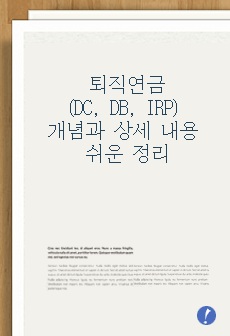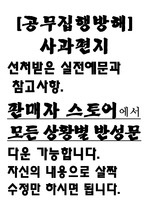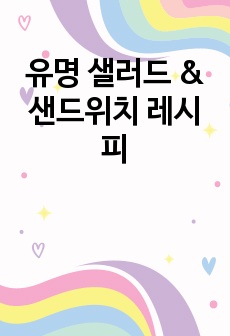UNDERSTANDING SCARCITY EFFECT ON LUXURY BRANDS USING THE THEORY OF AGONISTIC BEHAVIOUR
* 본 문서는 배포용으로 복사 및 편집이 불가합니다.
서지정보
ㆍ발행기관 : 글로벌지식마케팅경영학회(GFMC)
ㆍ수록지정보 : GFMC Session1
ㆍ저자명 : Elaine Sutrisna, Min Teah, Ian Phau
ㆍ저자명 : Elaine Sutrisna, Min Teah, Ian Phau
영어 초록
Despite an extensive literature in scarcity, limited studies have examined how scarcity appeal may deter consumers in obtaining luxury brands. This study aims to understand consumer perception towards luxury brands as underpinned by the theory of agonistic behaviour from biology literature. Introduction The luxury brand industry has long strived to achieve the perception of scarcity. Luxury brands are defined as the highest level of prestigious brands including physical and mostly intangible elements in which price and quality ratios are the highest in the market (Nueno & Quelch 1998; Vigneron & Johnson 1999). Only the wealthy are able to afford the products (Radon, 2012). Its exclusivity, rarity/scarcity, identity, perceived quality, and awareness have become the selling point of luxury brands (Pantzalis 1995; Phau & Prendergast 2000). As Smith (1776, 112) stated, “the merit of an object, which is in any degree either useful or beautiful, is greatly enhanced by its scarcity. . .”. According to literature, scarcity effect can only be created when the product is desirable yet achievable to be possessed by consumers (Verhallen 1982). It can be initiated due to low supply or high demand (Verhallen 1982, Verhallen and Robben 1994). Scarcity to high demand indicates that there is a high number of individuals who have purchased the products. This may appeal to the consumers who wish to assimilate themselves with others or called as followers (Worchel 1992; Amaldoss and Jain 2008). On the other hand, limited edition product is an example of scarcity due to low supply. In this situation, the firm intentionally limits the quantity of potential owners of the product (Gierl, Plantsch, and Schweidler 2008). Research has shown that low supply scarcity cue increases product desirability as it signals exclusivity to the owner and provides consumers with a unique image (Lynn 1989). As a result, low-supply scarcity is more appealing for leaders who wish to distinguish themselves from the group (Amaldoss and Jain 2008). Further, scarcity is often associated with perceived expensiveness (e.g. Lynn 1989; Wu and Hsing 2006). In other words, the scarcer the product, the more expensive and valuable the product is seen (Chen and Sun 2013; Gierl, Plantsch, and Schweidler 2008). This explains why numerous luxury brands companies create limited edition product at a higher price to increase the product appeal. However, in the recent years, interest in luxury goods is growing among mainstream consumers (So, 2015). The exclusivity of luxury brands starts to fade, and the circle of luxury brands owner has expanded significantly throughout the years (The Economist 2015; Yeoman & McMahon- Beattie 2014). Based on that rationale, one of the aims of this paper is to manage and improve the perception of scarcity in luxury brand industry by looking at the most basic concept of how consumers respond to scarcity. This study adopts a biology theory, specifically on animal behaviour to understand better how consumers react on scarcity. After decades of observing animal behaviour, ethologists found that there is a common pattern in the way animals respond to and compete for scarce resources (McGlone, 1986; Scott & Fredericson, 1951). Instead of fighting one another, animals tend to perform certain behaviours to scare the opponent without physically damaging the others. This behaviour is referred to as agonistic behaviour. Coined by Scott & Fredericson (1951), the term is defined as “the group of behavioural adjustments associated with fighting, which includes attack, escape, threat, and defence” (McGlone, 1986, 1130). It comprises several stages, namely threats, thought process, aggression, and submission. In the first stage, threat, the animals perform a species-specific behaviour, in term of vocalisations, facial expression, postures, and movements that signal the intention to be aggressive (McGlone, 1986). For example, when competing for food, monkeys create a threatening voice following with open-jawed and head bobbing. The threat is continued with the thought process where the animals examine the value of the resources and the internal and external factors influencing their decision. It is then led to two possible scenarios. In the first scenario, the opponent decides to withdraw the fight after being threatened, which is called as submissive behaviour. The second scenario happens when neither animal retreats. Therefore, they perform aggressive behaviours, and it stops when one party submits (submissive behaviour). Agonistic behaviour can be observed in human behaviour when competing for luxury brands. For example, when the Kanye West x Adidas Yeezy limited edition trainer shoes was released, it was sold out within 15 minutes (Tewari, 2015). Shortly after, the shoes were sold at $ 10,000 on Ebay, which originally priced for $200 a pair in a retail store (Tempesta, 2015). Similar to the agonistic behaviour in animals, although some choose to fight for the product, which means they perform the aggressive behaviour, there are those who prefer to be submissive. They opt to give up and purchase alternatives instead of pursuing the desired products. This phenomenon shows how consumers can be aggressive or submissive in competing for scarce products. Despite the similarities behaviour pattern between animals and consumers, limited research has identified the agonistic behaviour of consumers. There are research gaps within the scarcity literature. Firstly, limited studies have identified the effectiveness of different scarcity cues (supply-driven and demand-driven) in the context of luxury brands (e.g., Lynn, 1991; Worchel, Lee, & Adewole, 1975). Additionally, limited studies investigate the opposite effect of scarcity appeal (except Gierl and Huettl 2010). As identified, some consumers prefer to give up and purchase alternative such as mimic brands yet it has not been well understood in theory. As a result, this paper aims to (1) develop a framework to explain consumer behaviour towards scarce luxury products as underpinned by the theory of agonistic behaviour, (2) investigate the influence of the different type of scarcity cues (supply-driven and demand-driven) towards the purchase intention of the desired brands or alternatives. Theoretical framework and hypothesis developments Underpinning Theoretical Framework The theory of agonistic behaviour is the underpinning theoretical framework for the study which is supported by Stimulus-Organism-Response (S-O-R) model. Developed by Mehrabian & Russell (1974), S-O-R model has been widely used in a retail environment (Buckley, 1991; Chang, Eckman, & Yan, 2011) and to study different types of involvement (Arora, 1982). Stimulus is defined as any external stimuli that influence the internal states of an individual (Bagozzi, 1986; Eroglu, Machleit, & Barr, 2005). Organism is defined as the internal response which then leads to behaviour action, which is the Response from S-O-R model (Bagozzi, 1986). It is the final decision of consumers which lead to a certain action (Chang et al., 2011). The S-O-R model is outlined below: Stimulus The perceived scarcity and competition are the Stimulus which are influenced by the different scarcity cues presented. As mentioned, scarcity effect can be caused due to high demand or low supply. Hence, there may be no difference in term of the perceived scarcity. However, supply- driven scarcity is found to be more efficient for conspicuous consumption products while demand- driven scarcity is more efficient for non-conspicuous consumption products (Gierl and Huettl 2010). Therefore, luxury brands, being conspicuous consumption product by nature, are more likely to be perceived highly competed when it is presented as being scarce due to low supply. As such, the following hypotheses are developed: H1. Perceived scarcity do not differ in both scarcity conditions but differ to no scarcity condition H2. Perceived competition differs across scarcity conditions Stimulus-Organism The stimulus, perceived scarcity and competition, influence the Organism, namely perceived value. This relationships are supported by commodity theory, which describes that scarce products have relatively higher value and desirability compared to non-scarce products (Byun & Sternquist, 2012; Lynn, 1991). Further, consumers are more likely to feel a sense of competition when the stores sell unique or scarce items (Aggarwal, Jun, & Huh, 2011). As such, the following hypotheses are developed: H3. Perceived scarcity has a positive influence towards perceived value in all scarcity conditions H4. Perceived competition has a significant influence towards perceived value in all scarcity conditions Organism – Response The internal response, namely the perceived value, influence the response which is the intention to purchase. Numerous studies have found that high perceived value leads to a willingness to buy (Dodds and Monroe 1985; Monroe and Chapman 1987) and purchase (Zeithaml 1988). In this study, the intention to purchase is a representation to measure the aggressive and submissive behaviour. Purchasing the desired brand is considered as an act of aggression while choosing neither handbag or purchasing the alternative brand is seen as an act the submissive behaviour As such, the following hypothesis is developed: H5. Perceived value has a positive influence towards purchase intention of the desired brand compared to alternative brand Methodology Survey Instrument A self-administered pen and paper questionnaire was used for the survey instrument. The measurement used in the study are established scales with Cronbach Alpha higher than 0.8, fulfilling the criteria by Hair et al. (2010). The scales was presented in seven points Likert Scales, in which 1 = strongly disagree to 7 = strongly agree. Purchase intention, however, is a continuum scale in which option 1 represents a strong intention to buy the mimic brand, 4 accounts for neither mimic nor desired brand, and 7 accounts for a strong intention to buy the desired brand. Experimental Design There are three experimental conditions (scarcity condition: demand-driven; supply-driven; control) between subjects factorial design. To measure the purchase intention of the desired brand, a well-known luxury branding company was selected as the stimuli for the study. The brand, Bottega Veneta, was chosen as the brand is considered as a super-premium brand (Willett 2015) and the pre-test conducted with the University students showed that the brand is well-liked and adored. A non-fictitious brand, De Lux, is also selected to measure intention of purchase of the mimic brand. Each respondent was given two different pamphlets, one of the desired brand with a chosen scarcity condition and another of the mimic brand. Therefore, a total of 8 versions of a retail pamphlet were created (3 scarcity conditions with desired brand + 1 mimic brand x 2 genders). Product description and price information are also included (Lynn 1992). The pamphlets are created as identical as possible across different versions. The signal for supply-driven scarcity was portrayed by phrases and words such as “limited edition; supplies are limited; and unique”; while demand-driven scarcity “popular; bestseller; and highly in demand, almost sold out” (Gierl and Huettl 2010). Data Collections The data were collected from a sampling frame containing undergraduate students at a University in Western Australia. A total of 932 data were collected, but 305 data were discarded. Each respondent must have purchased luxury brands priced more than AUD 1500 within the last 3 years to ensure that the students are luxury consumers. The numbers were set after pre-test was conducted to identify the amount of money spent for luxury brands among the students. Out of 627; 250 students for supply-driven scarcity, 211 students for demand-driven scarcity, and 166 students for control were collected. The respondents had an average age of 20 and were divided into males (36%) and females (64%). Results and discussion One way ANOVA was conducted to compare means across different experimental conditions in terms of the perceived competition and scarcity (H1, H2). The result shows that there is a significant difference between perceived scarcity across experimental conditions. Luxury brands with “nearly sold out” scarcity cue (M = 5.49, SD = 1.19) are seen to be scarcer compared to luxury brands with “limited edition” scarcity cue (M = 4.92, SD = 1.16). Furthermore, luxury brand with no scarcity cue (M = 3.34, SD =1.4) is perceived to be not as scarce as the other two experimental conditions. On the other hand, although there is significant difference between the control condition (M = 2.7, SD = 1.40) and the two experimental conditions, there is no significance difference between “limited edition” scarcity cue (M = 3.99, SD = 1.58) and “nearly sold out” scarcity cue (M = 4.12, SD = 1.61). Therefore, H1 and H2 are not supported. Structural Equation Modelling was used to test model fit across different experimental conditions (H3, H4, H5). The final model revealed very good fit indices with the empirical covariances, as it fits the recommended criteria (Hair et al 2010): Normed Chi Square = 1.007, RMSEA = 0.004, AGFI = 0.940, GFI = 0.959, CFI = 0.990. The model shows that there is no significance relationship between perceived scarcity and perceived value in all 3 experimental conditions (limited edition β= 0.03, p = 0.735; nearly sold out β = -0.10, p = 0.244; control β = 0.09, p = 0.315). However, as hypothesised, there is a positive relationship between perceived competition and perceived value in all 3 experimental conditions (limited edition β = 0.43, p < 0.001; nearly sold out β = 0.57, p < 0.001; control β = 0.57, p < 0.001). In turn, in all 3 experimental conditions, there is a positive relationship between perceived value and purchase intention (limited edition β = 0.18, p = 0.030; nearly sold out β = 0.23, p = 0.014; control β = 0.45, p < 0.001). Therefore, H3 is not supported but H4 and H5 are supported. The findings demonstrate that different scarcity cues create a different level of perceived scarcity, in which “nearly sold out” are seen to be the scarcest, followed by “limited edition”, and no scarcity cues. However, instead of perceived scarcity, perceived competition is the important factor that affects the perception of luxury brands value. This can be explained as perceived competition creates a cue to consumers that the product is desirable by many yet only a handful can get the product. This is consistent with the statement by Verhallen (1982). The results also show that perceived value leads to positive purchase intention of the desired brands in all scarcity conditions. Surprisingly, the finding suggests that the relationship is strongest when there are no scarcity cues, followed with “nearly sold out” and “limited edition”. This can be explained due to a few reasons: (1) limited edition products are perceived to be more expensive (Chen and Sun 2013), (2) the respondents may not be leaders in purchasing luxury brands hence prefer to buy the normal or popular luxury brands to follow the crowd (Amaldoss and Jain 2008), (3) there are other variables, such as, self-efficacy and personality traits which are not taken into account. Conclusion This study contributes in several ways to the body of literature. Firstly, it extends the theory of agonistic behaviour from biology to marketing. By using agonistic behaviour as the underpinned theory, the study takes into consideration the option of consumers being submissive and prefer not to purchase the desired brands. Secondly, this study includes perceived competition as one of the main variable to analyse consumer behaviour towards luxury brands. Methodologically, the application of non-fictitious brands helps to capture real consumers’ response. Managerially, this study provides insights to luxury brands marketers on how to manage scarcity cues. Firstly, luxury brands marketers should develop strategies to strengthen the exclusivity and scarce image as currently normal luxury brands are not perceived as being scarce. The strategies may include to (1) limit the distributions channel of the luxury brands; (2) provide limited stock in every retail store to emphasise product scarcity; (3) introduce alternatives (premium brand extension or different product tiers) to consumers, allowing consumers, who are not able to purchase the desired brands, to choose the alternatives. Secondly, luxury brands managers must ensure that the products are desired by many to increase the perceived competition among consumers. Despite contributions, there is some limitation in the study. Firstly, this study used student sample hence future studies should consider using consumer panel to participate in the study. Secondly, there are some variables not taken into account, such as personality factor (self-esteem, status consumption, the need for uniqueness, etc.), self-efficacy, leader vs. followers. In addition, this study focuses on two scarcity conditions (supply-driven and demand driven scarcity cues), luxury brand industry, and public luxury product (handbag). Future studies should look at time-restricted scarcity cues, retailing, and private luxury products (e.g. undergarment). This study also did not measure the actual purchases and different behaviour of aggression when consumers are competing for products. Future studies should observe consumer behaviour during purchase in real time.참고 자료
없음"GFMC Session1"의 다른 논문
 FAST AND SLOW FASHION BRANDS IN DEVELOPING SUSTAINABLE ..6페이지
FAST AND SLOW FASHION BRANDS IN DEVELOPING SUSTAINABLE ..6페이지 “WHAT IF A CELEBRITY AND A BRAND CO-CREATE A NEW COLLEC..7페이지
“WHAT IF A CELEBRITY AND A BRAND CO-CREATE A NEW COLLEC..7페이지 THE INSTAGRAM’S STRATEGY IN ENGAGING THE CUSTOMER’S LOY..3페이지
THE INSTAGRAM’S STRATEGY IN ENGAGING THE CUSTOMER’S LOY..3페이지 THE PARTICULARITIES OF NEW PRODUCT DEVELOPMENT IN THE T..5페이지
THE PARTICULARITIES OF NEW PRODUCT DEVELOPMENT IN THE T..5페이지 THE LONE CHOCOLATE BAR: THE INFLUENCE OF PERCEIVED SCAR..6페이지
THE LONE CHOCOLATE BAR: THE INFLUENCE OF PERCEIVED SCAR..6페이지 ADS AS WORKS OF ART: MEASURING ADVERTISING IMMERSION3페이지
ADS AS WORKS OF ART: MEASURING ADVERTISING IMMERSION3페이지 ECONOMIES OF SMALL: NICHE STRATEGIES AND SUCCESS FACTOR..8페이지
ECONOMIES OF SMALL: NICHE STRATEGIES AND SUCCESS FACTOR..8페이지 THE INFLUENCE OF ONLINE CUSTOMER REVIEWS ON RETAILERS' ..6페이지
THE INFLUENCE OF ONLINE CUSTOMER REVIEWS ON RETAILERS' ..6페이지 IS THE ARTIFICATION PROCESS PERCEIVED BY FINAL CONSUMER..6페이지
IS THE ARTIFICATION PROCESS PERCEIVED BY FINAL CONSUMER..6페이지 THE ODD EVEN PRICE PARADOX IN THE FASHION LUXURY SECTOR6페이지
THE ODD EVEN PRICE PARADOX IN THE FASHION LUXURY SECTOR6페이지




















